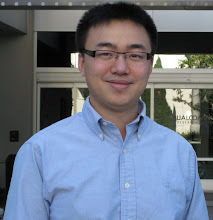@misc{ freitas01survey,
author = "A. Freitas",
title = "A survey of evolutionary algorithms for data mining and knowledge discovery",
text = "Freitas, A.A. (2001). A survey of evolutionary algorithms for data mining
and knowledge discovery. To appear in: Ghosh, A.; Tsutsui, S. (Eds.) Advances
in evolutionary computation. Springer-Verlag.",
year = "2001",
url = "citeseer.ist.psu.edu/freitas01survey.html" }
This paper introduced in detail how the two variants of genetic computation: genetic algorithms(GA) and genetic programming(GP), could be used in the data mining and knowledge discovery process. It is my first time to read the clear statements that generalize knowledge discovery process. The paper illustrated GA and GP's usages in the three stages of the classification tasks in DM and KDD, namely, preprocessing, rule generation and postprocessing. As gene express programming (GEP) is the evolved offspring of GA and GP, and lots of other DM/KDD tasks could be mapped to classification tasks. It is enlightful to solve a certain KDD question, such as one in web mining, with GEP.





